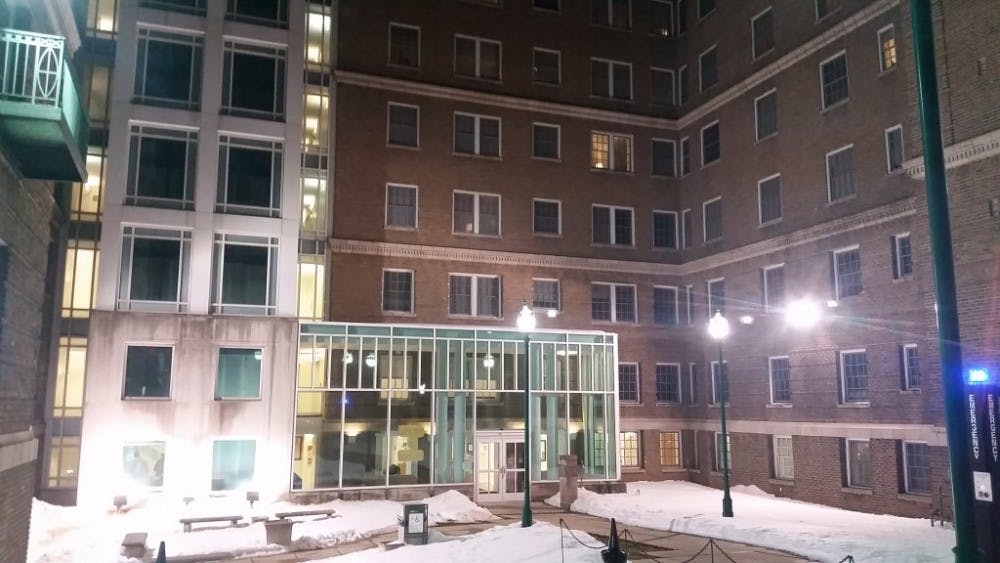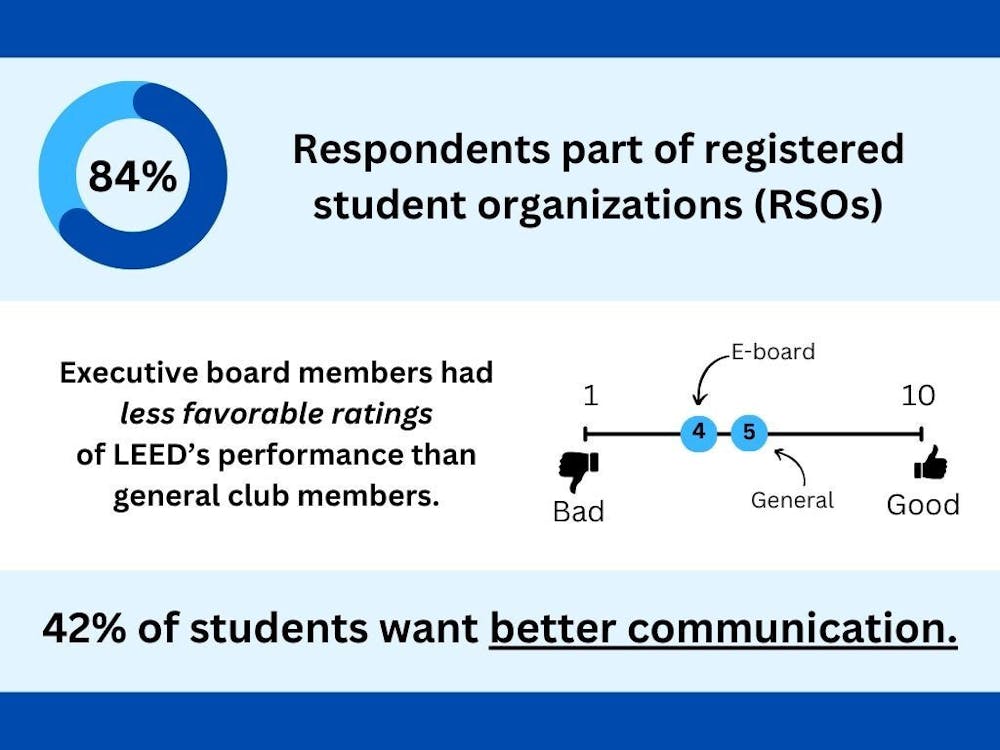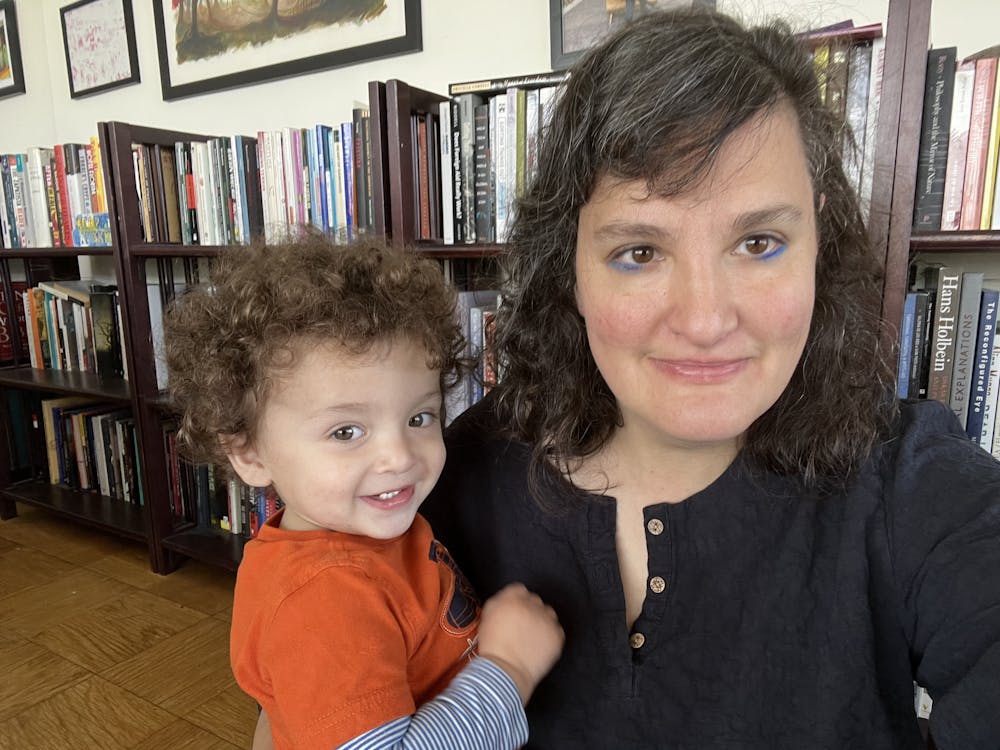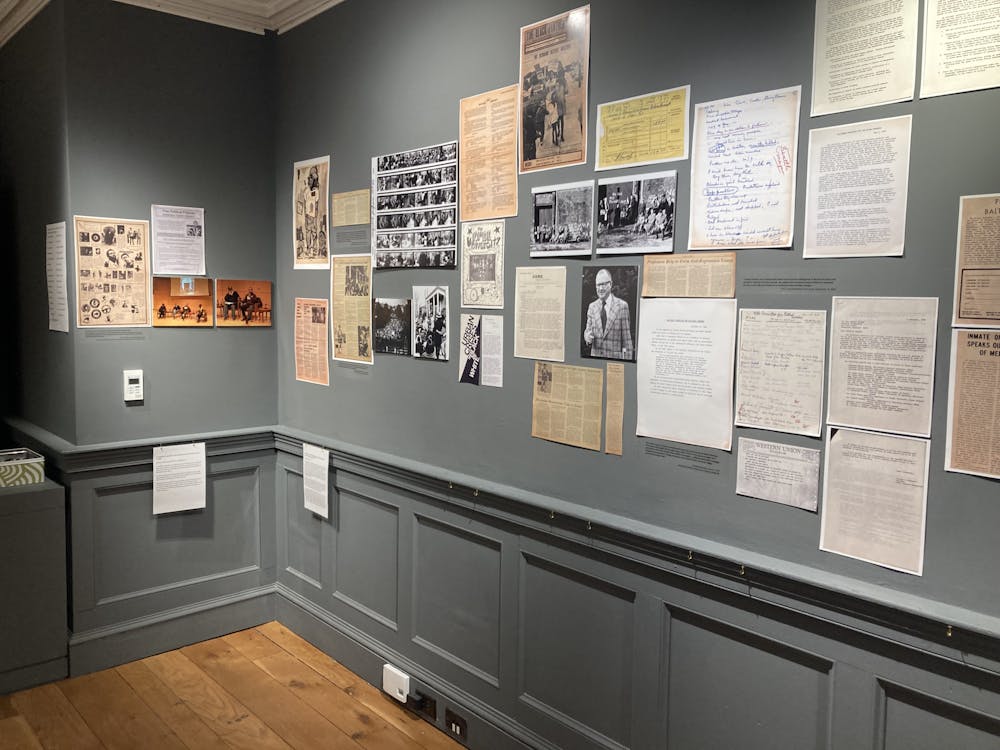According to the results of a national survey of over 1,500 undergraduates, students of color are less likely to feel academically or emotionally prepared than their white counterparts, more likely to say that college is not meeting their expectations, and less likely to ask for help when experiencing mental distress.
The recent survey was conducted by the JED Foundation, Partnership for Drug Free Kids and The Jordan Porco Foundation.
At Hopkins, members of the Black Student Union (BSU) and Active Minds as well as the Counseling Center all agree that more can be done by both the administration and the student body to improve mental health for students of color on campus.
During their first semester, students of color in the survey were less likely to rate their experience as “good” or “excellent,” with a rate of 48 percent compared to 62 percent for white students. Students of color were more likely to feel angry or overwhelmed most of the time. Forty-one percent of black students surveyed said they considered transferring during their first semester, compared to only 21 percent of white students.
Dr. Vic Schwartz, the medical director of The JED Foundation, a mental health advocacy organization, said that students often keep their mental insecurities to themselves because of pressure from home, little guidance in college and lack of knowledge of available resources.
“For every student starting college, especially if you’re living away from home for the first time, there is anxiety and stress,” Schwartz said. “It’s also not unusual for people to imagine that everyone else seems to have it so together. You look around, and people appear to be okay and handling it alright. Your assumption is that what you’re seeing is what is consistent with their inner experience. We all know that there are times when we might be uneasy or frightened or down, and we don’t let those around us see that.”
Schwartz explained that the transition to college is a tougher time for students than many think.
“For somebody who may come to a new setting like college... everybody else seems to be having a grand old time. It makes it a little bit difficult to say ‘Well, I’m the one who’s standing out. Why am I having this hard time when everyone else seems to be doing well?’” he said.
The transition to college can be especially hard for minority students, who are more likely to be the first in their family to attend college.
“If we look at students who might already feel marginalized, not fully accepted, not part of the mainstream of the community, it adds another ingredient to the difficulty of saying ‘You know, I’m having a hard time,’” Schwartz said. “If you add to that the possibility, which might be slightly more common with minority students or students coming from lower socioeconomic backgrounds who may be the first person in their family to attend school, they don’t want to let their family down.”
There are available resources for students of color on the Hopkins campus, including the Office of Multicultural Affairs (OMA) and the various student groups under its umbrella, and counseling services. Matthew Torres, executive director of the Counseling Center, detailed the programs that the center offers specifically to students of color.
“[W]e have a staff member who serves as our Coordinator of Services to Black Students. [Leslie Leathers] coordinates our participation in the University’s efforts to help students of color transition to JHU through programming provided in collaboration with OMA,” Torres wrote in an email to The News-Letter. “She also works with OMA to help support students of color at different points in their academic careers by collaborating with groups like MAPP (Mentoring Assistance Peer Program), M.O.C.H.A. (Men of Color Hopkins Alliance) and the BSU. We also offer a Students of Color Support Group in the Counseling Center, and Dr. Leathers facilitates a drop-in discussion group at OMA for first-generation students.”
In Torres’ experience, students of color seem to know about the Counseling Center’s services, as the percentage of students of color who visit the center is proportional to the percentage of students of color who attend the University. But he supports increasing the opportunities for mental health dialogue on campus.
“I think the campus would benefit from more University-sanctioned opportunities for dialogue between students who occupy various seats of oppression and privilege,” he wrote. “Through this and other steps, the University’s environment might become more supportive and more inclusive for students of color and other students who occupy some seat of relative oppression.”
BSU Vice President Tiffany Onyejiaka said that the University needs to publicize its resources better for all students, but specifically for students of color.
“I would say the fact that there’s something targeted at students of color is pretty nice, but I don’t think it’s publicized or well-established enough because I know many people who haven’t heard of it who might benefit from it,” Onyejiaka said. “So I’d say that even if it’s fair, it’s not made well-known to students of color the way it should be.”
Onyejiaka said that students shouldn’t be afraid to reach out to the Counseling Center and that students should verbally support their peers.
“I think that the Counseling Center has the stigma that it’s only for people who are on the brink or people who need serious help,” Onyejiaka said. “It’s not really publicized as a place where someone who’s just going through everyday, normal stresses brought on by academics [can] just go and talk to people.
Onyejiaka criticized how some professors addressed the requests of students of color during the Baltimore-wide protests in April after the death of Freddie Gray, a 25-year old black man.
“Last year, when the riots were happening, there were certain professors who understood the stress about it and were willing to let students [have extensions] because it was around finals week for some students,” she said. “But at the same time, I know people in this one class, I think Fundamentals of Health and Wellbeing, who were like “Can we get an extension?’ and the professor was like ‘No.’”
The protests last year were a stressful time for students of color, and Onyejiaka was not satisfied with the administration’s response to requests from students of color for support.
“Another student, for a chem class, they had to email the Dean of [the Krieger School of] Arts and Sciences [Beverly J. Wendland] for the dean to say to that professor ‘You need to give people an extension,’” Onyejiaka said. “People don’t understand that the mental health of being a student of color is different.”
White students were around two times more likely to report in the survey having anxiety, ADHD, depression, self-harm or bipolar disorder than black or Hispanic students. The prevalence of these mental health conditions is not thought to differ across racial, ethnic or gender groups. Schwartz, of The JED Foundation, addressed the disparity in diagnosed mental health conditions between white students and students of color.
“Our speculation is that it actually reflects less access to care and less help-seeking in the minority groups. If you haven’t seen a clinician, you won’t be diagnosed,” he said.
John Hughes, president of Hopkins’ Active Minds chapter, agreed there is a disparity between students of color and white students, and added that it reflects a larger phenomenon in society.
“A lot of times, it’s difficult for people of color to find a psychologist who understands the connection between their experiences as a person of color and their mental health experiences,” Hughes said. “I don’t think it’s particularly better or worse here at Hopkins.”
According to Schwartz, all college students can do more to support the mental health of their peers, especially those who have experienced mental illness or who want to support their peers who are going through difficult times.
“The first step to reach is... creating programs that are looking to address the concerns of various groups on campus and thinking about and listening to different groups whether they be students of color, whether it be international students, who also experience being marginalized,” Schwartz said. “[We’re also] looking for ways to do programing that is broad but also gives people the opportunity to talk about their concerns about these differences. And how the school is talking about it and addressing it is really starting conversations.”
Torres, the Counseling Center director, added that white students should make an effort to better understand the situation of students of color.
“One’s identity is comprised of a mix of sources of privilege (such as being male, Caucasian, heterosexual and having been raised in a wealthy family) and oppression (such as female, person of color, bi-sexual, and being a first-generation college student),” Torres wrote. “Understanding and truly appreciating the pieces that comprise one’s own identity and the identities of others decreases prejudice and promotes compassion, respect and the appreciation of diversity.”
Schwartz, however, cautioned that there must be a clear boundary between mental health problems and issues of racial justice, policy and equity.
“Although some of those issues and policies may have a bearing on how mental health services are provided, they’re not the same thing,” he said. “There are many strands of this conversation, all of which are legitimate and need to be talked about.”
Hughes argued that adding more mental health resources on campus without specifically targeting students of color would be a mistake.
“If you look at the willingness of medical doctors to administer pain medication, not only is it strongly biased along gender, but strongly biased along race. Doctors are much less likely to view the pain of patients of color, especially black patients, as valid,” Hughes said. “They have this subconscious idea that they’re lying. The same applies to mental health. There’s this subconscious doubt that comes along with systems of racism and white supremacy that takes work to basically eliminate in mental health treatment.”
Schwartz said the most immediate change that the administration and Hopkins students could make in order to support those experiencing mental illness is to have an open dialogue and to address this difficult topic head on, while not rushing to create ineffective policy.
“I know sometimes when there’s turmoil, there’s a lot of pressure on the administration to feel and appear as if they’re doing things,” Schwartz said. “Really, there’s value in just giving people the opportunity to share their ideas and feelings.”
Sophomore Hansel Romero praised the current efforts of the Counseling Center and OMA.
“The Counseling Center serves all students as well as it can, but I’ve seen the Office of Multicultural Affairs reach out to me and other students of color on multiple occasions to offer its own counseling, safe space and other resources,” Romero wrote in an email to The News-Letter.
Romero detailed his vision for the future of mental health advocacy at Hopkins.
“While these clear social mores are systematic and can’t be broken down overnight, students of all backgrounds need to be aware that they exist. There’s discrimination against minorities, against women (especially in engineering), against the LGBTQ+ community, and even against some majors and minors. We need to acknowledge these discriminations and do everything we can personally, as citizens of the Hopkins society, to put an end to them,” Romero wrote. “That way, students of any background can feel comfortable not only on campus, but in their own skin. Make that happen and mental health becomes one issue to tackle instead of two.”
In recent months, campuses nationwide have erupted with arguments about free speech and “safe speech.” In December, the BSU included slides that showed anonymous racist posts on Yik Yak that black students said threatened their safety. Onyejiaka explained how students of color feel when threats are made on Yik Yak and why she believes action is required now.
“It really stresses you out because it’s students on campus,” Onyejiaka said. “To know that people on campus, people in your classes are saying terrible things can be very stressful. But then also, when you’re going to the administration, you’re telling them that people are doing these terrible things and they’re not doing anything about it, that can also be very exhausting.”
Torres explained that while the Counseling Center doesn’t have a stance on Yik Yak, it can be harmful, especially for students of color.
“Yik Yak can be and has been used by some people to broadcast hateful and hurtful ideas,” he wrote. “Broadcasts of hateful speech are certainly problematic and we believe that working to combat oppression on an interpersonal level can lead to meaningful changes in attitudes that may significantly decrease such public displays of enmity.”
Onyejiaka is not pleased with the administration’s response to the BSU’s Yik Yak campaign.
“I appreciate the fact that they put in effort to talk to the community, but I don’t think that there was enough of an effort to minimize insults on campus because there are schools where the WiFi servers don’t allow you to have it,” she said. “And granted, while they mentioned that a student could just use their data for it, just the physical act of the school being like ‘Our WiFi will not support this’ is a very strong statement that would make an impact on students of color.”
















Please note All comments are eligible for publication in The News-Letter.